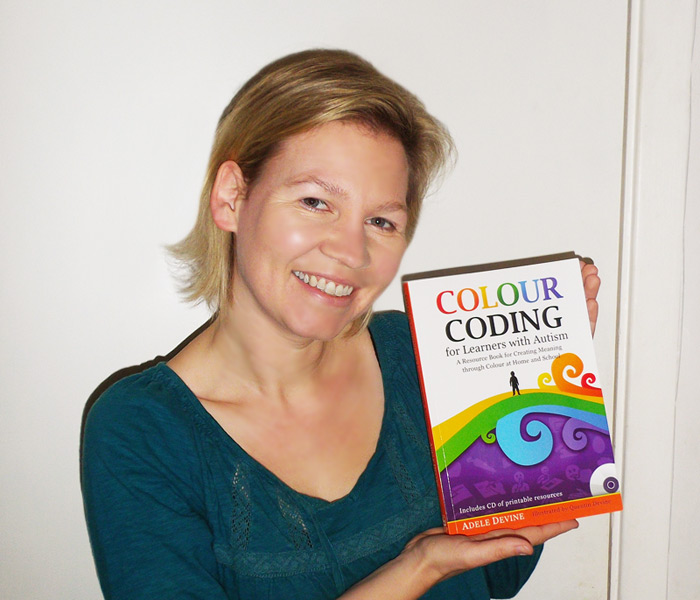The Trouble With Children Who Chew

Problem chewing has many possible causes, but responding to each child’s individual needs is always the solution, says Adele Devine…

- by Adele Devine

Chewing can be distressing for us to observe, so how must parents feel? Imagine if your child continually came home from school with soaked, raggedy sleeves – would you be frustrated? School sweaters aren’t cheap. Worried? Is your child anxious or bored? Suspicious? Is your child being supervised? Isolated? Why is your child the only one who does this?
Communicate openly. Show that you recognise the issue and reassure parents. You are going to need to work together to resolve it. Chewing can be a sign of Sensory Processing Disorder, autism or anxiety, so refer the child to an occupational therapist for specialist advice.
The right response
Children chew for different reasons. They could be exploring – mouthing toys is a natural developmental stage, most commonly seen in babies. It could be a sensory need. Chewing and biting provide children with lots of tactile proprioceptive input.
Provide something they can chew and create a ‘sensory diet’ – for example, a small trampoline, a large ball to bounce on, access to deep pressure through massage or weighted blankets, etc.
Anxiety or frustration might be the culprit. When do children chew? Is it when the class gets noisy, during transition times or when they are not getting their own way? If the chewing is ‘reactive’ we must think ‘restorative’ or ‘redirective’. Set up a ‘best day’ scenario and see if reducing demands helps reduce chewing. Is boredom to blame? Your setting may seem far too exciting and stimulating for this to be the case, but observe children. Try ‘Intensive Interaction’ to discover their interests. Follow their lead. Try an ‘Attention Autism‘ session and see if you can grasp their attention. Tune into what interests individual children. Whatever the trigger, once a child is chewing regularly it can become a routine or habit. We cannot stop the chewing immediately, but we can break the habit in stages.
Chewing can be distressing and frustrating to see, and we must react in a loving, respectful way. Build the child’s feelings of trust and security and provide alternatives. Observe, adapt, reduce demands, add visuals and the means for communication.
Trust your teacher instinct and don’t fear trying out that new idea. As Lord Byron once observed, “There is no instinct like that of the heart.”
Case study – Anto’s need to know
The issue Anto always liked to know exactly what was on our schedule. He was a clever little boy and would try to negotiate by removing and replacing symbols on our visual schedules himself. He did not just want to know what was happening next, he wanted to know our plans for his entire day, the plans for after school, the week ahead and the weekend. When Anto did not like the information we gave him, he would try to negotiate a change by swapping the symbols around – and when this tactic did not work, he would head bang and chew at his jumper and sleeves. It was painful to observe. He was so distressed…
A new approach I realised that part of the build up to Anto’s chewing was the ‘trying to change things around’, and noticed that discussion with him only served to increase his frustration and anxiety. In response I placed a chart up high on the wall, out of reach. It showed daily activities and also what Anto would do after school each day. Was he staying with his Dad, his Mum or going to respite?
Staff agreed to point up to the chart and read “Monday, Anto goes to respite.” Once it had been read we would simply point to the chart.
Outcomes The chart had an immediate impact. Not being able to manipulate the visual removed the need to keep trying to negotiate what we could not change. Anto quickly realised that the answer would remain consistent and as a result, his obsession with discussing it was reduced. This had the knock on effect of reducing Anto’s anxiety too, as well as incidences of meltdowns and the associated chewing.
Case study – Shimmy’s sensory diet
Observation Shimmy liked to climb, bounce and run, and was forever on the move. He would also mouth and chew anything and everything – buggy handles, plastic toys, bottles. He had an incredibly strong bite.
The usual teething toys would not last more than a few minutes, tops of water bottles would be destroyed in seconds. At mealtimes Shimmy loved to eat and was quick to grab food from other children’s plates.
Sensory needs We immediately gave Shimmy access to a chewy tube. We noticed that he loved to sit in our class buggies and enjoyed the sensory feedback of deep pressure. We introduced a 1:1 individual timetable based around his sensory needs – short, motivating activities followed by physical activity such as bouncing or swimming.
At mealtimes Shimmy coped best when sat in our class swing. He seemed to feel more secure and would use a fork to feed himself, which required more time and focus.
Making progress Shimmy still needs to chew a lot, but by giving him things he can chew and creating an individual programme based around his sensory needs, we are seeing him access learning opportunities and develop positive relationships. Products specifically designed for children who chew include chewy tubes, necklaces, toy straps, bangles and gadgets. Remember to read the safety advice for any you try, supervise their use and wash them regularly!
Address the issue
10 steps to tackling problem chewing…
• Note when chewing occurs. Find the root and respond.
• Provide sensory equipment for a ‘sensory diet’.
• Create a retreat if chewing is linked to noise or anxiety.
• Provide access to headphones, fidget toys and deep pressure.
• Provide something the child can chew when they need to.
• Ensure the child can communicate “I want to chew.”
• Redirect, suggesting, “Chew hammer” rather than “Don’t chew.”
• Try not to make the chewing too much of an issue.
• Reduce the ease of access, for example, roll up the child’s sleeves.
• Communicate and reassure parents. Work together.






